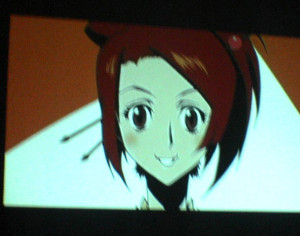 Do you know how to keep your screen at its best and prevent RPTV Screen Burn?
Do you know how to keep your screen at its best and prevent RPTV Screen Burn?
Nothing beats playing video games or watching movies on your RPTV. Depending on your model, you need to be careful about letting static images remain on your screen for too long as it can result in RPTV screen burn. Normal TV viewing has the screen filled with constantly changing images so that the picture tube ages evenly across the entire screen giving you a picture that is bright and even.
Stationary images that partially fill the screen (such as black bars on the side or a small logo in the corner) create an uneven aging of the phosphors in the tube and leave subtle ghosts of the images on screen. Known as RPTV screen burn, these ghost images can interfere with your viewing experience and be very distracting.
Fortunately, many RPTVs aren’t susceptible to RPTV screen burn but to be sure you don’t end up with a Super Mario logo on your screen, here are some tips to preventing this condition:
- Avoid stationary patterns over long periods of time. This includes:
- Letterbox top/bottom black bars: This appears at the top and bottom of the screen when watching a widescreen (16:9) movie on a standard (4:3) TV.
- Side bar images: These solid bars are shown on each side of an image when watching a standard (4:3) program on a widescreen (16:9) TV.
- Stock-market report bars: Ticker running at the bottom of the TV screen.
- Bright graphics: Logos shown constantly or repeatedly in the same location such as the Shopping channel logos or pricing displays.
- Video game patterns and scoreboards
- Bright station logos
- Internet web sites or any other stationary, repetitive computer style image.
- The normal use of your RPTV should include a variety of TV picture types. Watch a DVD, watch your favorite TV show or movie, play a video game, surf the net. Mixing it up will ensure you don’t have one image displayed too long on the screen that creates RPTV screen burn.
- Probably the worst thing to do is leave a static image like a DVD menu frozen on the screen. Adjusting your brightness and contrast levels when using a DVD will help.
- After using your set for video games, put the moving TV image on screen for four to five times longer that the set was used for displaying the video game. This is will allow the screen to recover.
- Set the contrast (or picture) level between 20-35% of max. You will not see much of a change in the picture but it will reduce the possibility of screen burn.
- Avoid showing the same stationary image for more than 15% of your total TV viewing in any one week.
- Program a timer to shut off the TV at whatever time you choose. This will help avoid burn-in and set an automatic curfew so if you do fall asleep in front of the TV, you’ll be safe.
- Many RPTVs have a pixel shift feature that prevents screen burn-in. The option allows you to move the picture from side to side or up and down the screen at different intervals. A secondary feature allows you to select a white screen or rolling screen to by changing remaining colored pixels to white and removing them. Check your manual to see if your model has this function to prevent RPTV screen burn.

